Fire was a constant danger in Kansas City’s early history. Most homes were built of wood and heated with coal. Chimney fires were common and every second mattered for the crews tasked with putting them out.
Ray Elder, the official historian with The Kansas City Fire Historical Society, began documenting the history of Kansas City’s fire department when he retired after 35 years — 16 years as its captain. He’s written 23 books on the department’s history, beginning with the first volunteer bucket brigades as early as 1858.
He said one name is synonymous with fighting fire in Kansas City.
“Anytime anybody says fire department, I think George Hale,” Elder said.
George C. Hale was named chief of the Kansas City Fire Department in 1882, and he served as its leader for 31 years. He was a mechanical genius who had a knack for solving the problems firefighters faced in his era.
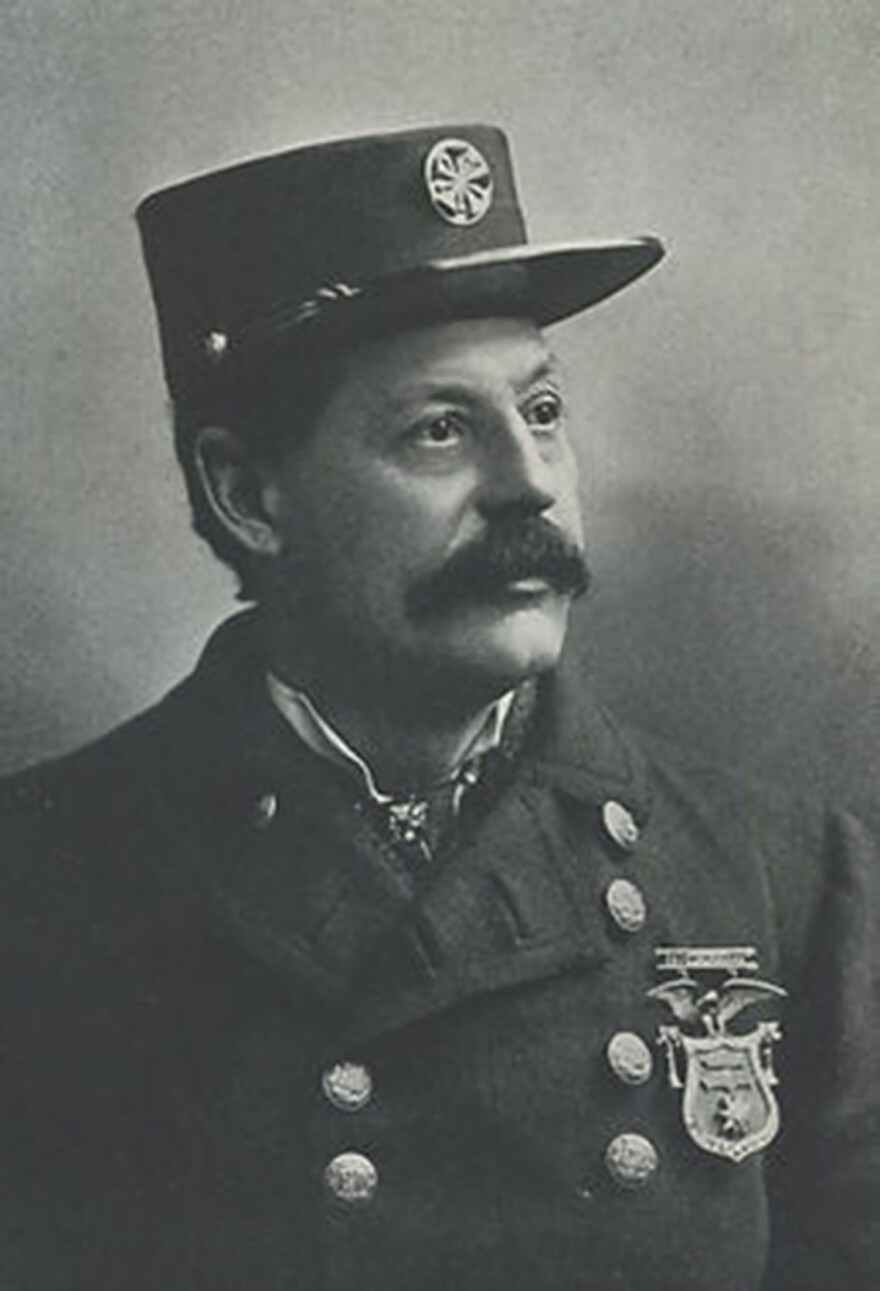
The Kansas City Fire Historical Society
George C. Hale was named Chief of the Kansas City Fire Department in 1882, and he served as fire chief for 31 years.
Teams of trained horses were used to transport equipment to and from fires from 1860 to 1927. Harnessing the horses was a time-consuming business until Hale invented the swinging horse harness.
The quick hitch harness was suspended from the ceiling of the fire station. When the alarm sounded the horses moved into place and the hitch was quickly dropped onto their backs. The harness snapped into place and hitched to the horse and fire wagon. Once the horses were hitched, they were ready to gallop off to the fire.
Elder said Hale drilled his men to make certain every moment counted.
“They would test getting on the fire truck and going out the door,” Elder said. “You know when that fire engine went out the door you better be on it.”
The Kansas City Fire Department held the record for the speediest hitch of any fire company in the world — they could do it in one and a half seconds. Demonstrations of the harness were so successful that major cities and countries around the globe were clamoring to see the Kansas City firefighters in action.
Hale’s squad was invited to represent the United States as the “American Fire Team” at the International Fire Congress in London in 1893.
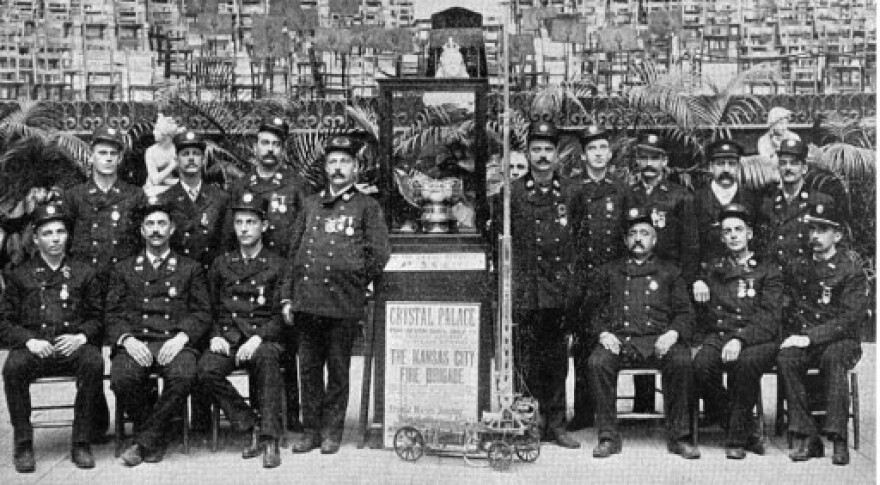
The Kansas City Fire Historical Society
Kansas City’s Fire Department represented the United States as the “American Fire Team” at the International Fire Congress in London in 1893.
In London, the competition simulated a night alarm. The men were turned out of their beds, had to descend a flight of stairs, harness and hitch the horses, and race out the fire house.
Spectators in London marveled at the speed of Hale’s firemen with their dashing white horses and the trick harness. The Kansas City crew sprang into action and completed the event in a record 8 1/2 seconds. The English team, using older methods, took 3 minutes.
The Kansas City Star reported that watching from the royal box during the competition was an English aristocrat. When he saw the Kansas City men hurrying to their stations, their clothes automatically fastening on them, the harnesses dropping and fastening on the horses, the nobleman expressed his astonishment.
“My word, these Yankees have more tricks than a magician,” he said. “They’ve got an outfit like a full-rigged ship.”
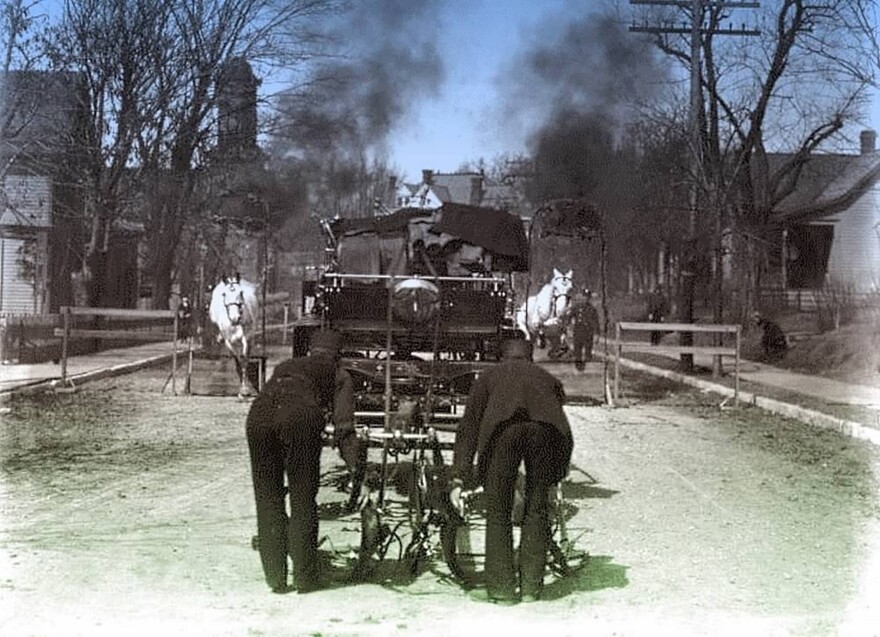
The Kansas City Fire Historical Society
The Kansas City Fire Department team trained to go to England for an international firefighting competition in 1893. Hale’s men handled modern firefighting equipment and they were highly disciplined.
Hale’s firefighters were so successful that they were invited for an audience with Queen Victoria.
Later, at the Paris Exposition in 1900, his firemen once again raced away with all the prizes, competing with fire crews from all corners of the globe. The team became known as the most famous fire department in the world.
Paul Ferguson is president of The Kansas City Fire Historical Society. He said Hale’s men were trained to handle modern firefighting equipment and they were highly disciplined.
“This department was a tight ship under Hale,” Ferguson said. “If you made mistakes, you paid the consequences. These guys would even get disciplined for making a wrong turn going to a fire.”
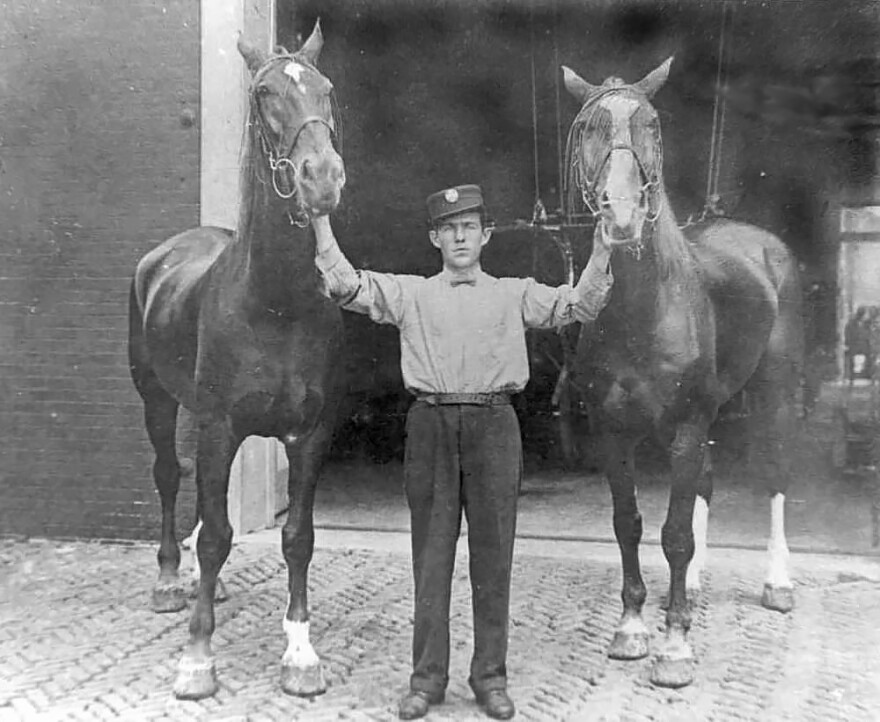
The Kansas City Fire Historical Society
In the late 1800s, trained horses pulled heavy steam-powered fire pumps to the scene of fires in Kansas City. By 1927, horses were replaced with motorized fire engines.
Hale was always eager to find new ways to improve firefighting.
He patented a dizzying number of inventions to give firefighters the tools to do their jobs more efficiently. He invented electric wire cutters, a door opener, a cellar nozzle, a rotary tin roof cutter, a patent hose nozzle, a telephone fire alarm and special fittings for the horses that pulled the fire engines.
As buildings grew taller, firefighters needed longer ladders, larger pumps, and longer hoses to reach fires in the upper floors. One of his greatest inventions may have been the Hale Water Tower. His mobile, telescoping tower was originally pulled by a team of three horses that could bring hoses close to even the highest stories of a building.
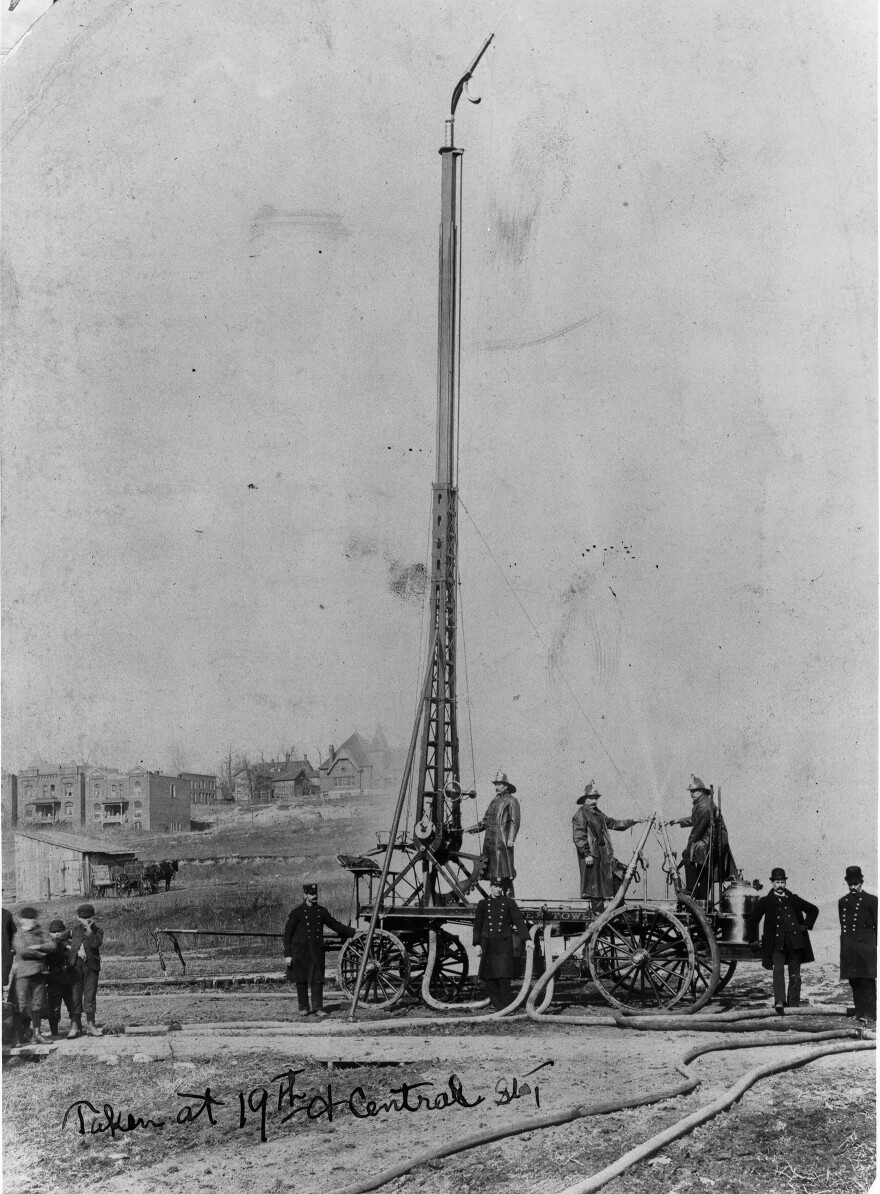
Missouri Valley Special Collections
George Hale’s Water Tower demonstrated at 19th and Central streets in the 1880s.
According to Ferguson, some of Hale’s methods could be unorthodox for the time.
“His ideas changed our whole fire service,” Ferguson said. “He even hired a circus gymnast to teach physical fitness to the firefighters. We’re talking about ideas he had in 1900 here.”
Hale even designed the layout for the old Fire Department headquarters (Fire Station No. 2), at 1020 Central Ave., which was built in 1906. The first floor was for the apparatus, the second floor was offices and a bunk room. Third floor was a gymnasium where firefighters could train and build their strength.
“Our fire department of the ‘70s would look queer today,” Hale told The Kansas City Star in 1919. “We didn’t have the full uniform of firemen in those days. Instead we wore bright shirts with the words ‘We die to save,’ in big print across their fronts. And on the back of our belts was the inscription ‘Ever Ready.’”
“The chief had a big silver trumpet with cords and tassel — I have it still — that was the forerunner of the megaphone. We had no water system. Instead, rainwater was caught up in ponds and pools that were distributed about the town.”
In the end, Hale was brought down by politics. He was fired in 1902 by the Kansas City City Council, under Mayor James L. Reed.
Reed wanted to award a lucrative contract to the Gamewell Company for a fire alarm system, but Hale publicly disagreed with him. Hale called the system unreliable and poorly constructed. He also pointed out that Gamewell was charging Kansas City double the rate the company had charged other cities.
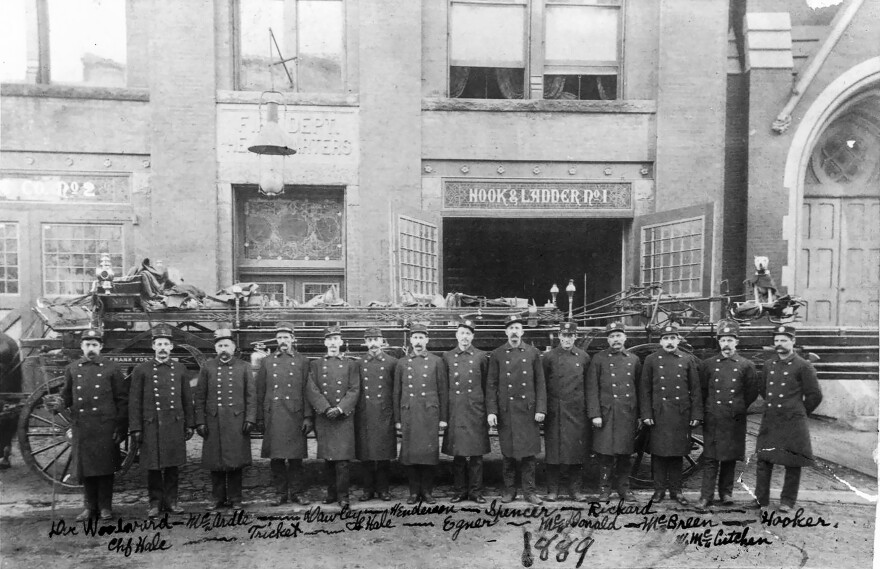
Missouri Valley Special Collections
A group of Kansas City Firemen stand in front of the Fire Department Headquarters Building, Hook & Ladder No.1, in 1889.
Hale lost his job, but he didn’t stop inventing. He was an authority on firefighting of the era and was called to many cities to advise departments around the country. He sold firefighting equipment to countries as far away as Russia and Australia.
When Hale died in July of 1923, The Kansas City Journal called him “one of the greatest fire chiefs in the history of modern fire fighting.”
Source link : http://www.bing.com/news/apiclick.aspx?ref=FexRss&aid=&tid=66d59aa39471484ebd5202d7b7d2d95f&url=https%3A%2F%2Fwww.kcur.org%2Fhistory%2F2024-09-02%2Fhow-an-inventive-kansas-city-fire-chief-brought-firefighting-into-the-modern-era&c=3248926574076804481&mkt=en-us
Author :
Publish date : 2024-09-01 22:00:00
Copyright for syndicated content belongs to the linked Source.




